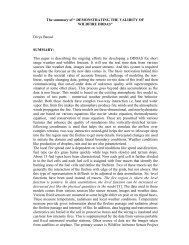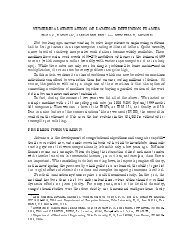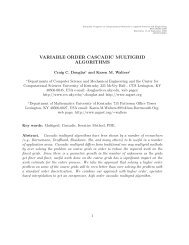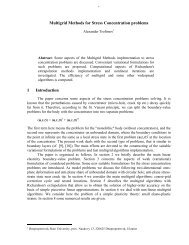Discrete Mathematics University of Kentucky CS 275 Spring ... - MGNet
Discrete Mathematics University of Kentucky CS 275 Spring ... - MGNet
Discrete Mathematics University of Kentucky CS 275 Spring ... - MGNet
You also want an ePaper? Increase the reach of your titles
YUMPU automatically turns print PDFs into web optimized ePapers that Google loves.
Examples: Typical ones include<br />
• P n = 1.15$P n-1 is degree 1.<br />
• f n = f n-1 + f n-2 is degree 2.<br />
• a n = a n-5 is degree 5.<br />
Examples: Ones that fail the definition include<br />
• a n = a n-1 + a2 n-2<br />
is nonlinear.<br />
• H n = 2H n-1 + 1 is nonhomogeneous.<br />
• B n = nB n-1 is variable coefficient.<br />
We will get to nonhomogeneous recurrence relations shortly.<br />
129<br />
Solving a recurrence relation usually assumes that the solution has the form<br />
a n = r n ,<br />
where r,C, if and only if<br />
r n = c 1 r n-1 + c 2 r n-2 + … + c n-k r n-k .<br />
Dividing both sides by r n-k to simplify things, we get<br />
Definition: The characteristic equation is<br />
r k 4 c 1 r k-1 4 c 2 r k-2 4 … 4 c n-k = 0.<br />
Then {a n } with a n = r n is a solution if and only if r is a solution to the<br />
characteristic equation. The pro<strong>of</strong> is quite involved.<br />
The n = 2 case is much easier to understand, yet still multiple cases.<br />
130












